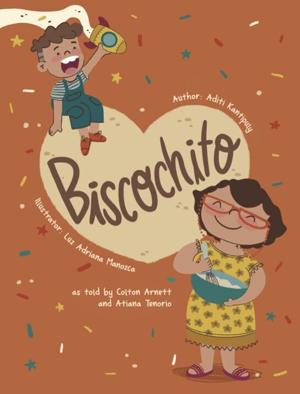Science
Author Aditi Kantipuly Brings Awareness to Genetic Disorder Through Children’s Book

Aditi Kantipuly, a physician training in preventive medicine at a Canadian university, has creatively combined science and storytelling to raise awareness about cerebral cavernous malformation (CCM). Her newly published children’s book, Biscochito, aims to explain this complex genetic condition to younger audiences in a relatable format.
Cerebral cavernous malformation is a rare disorder characterized by clusters of small blood vessels with abnormally thin walls in the brain and spinal cord. These can lead to chronic headaches, seizures, and stroke-like symptoms. The condition is notably more prevalent in New Mexico than in other parts of the United States, with genealogical studies linking one variation of CCM to early Spanish settlers in the region. Although there is currently no cure, ongoing research at institutions such as the University of New Mexico Health Sciences Center seeks to identify effective treatments.
In an effort to make information about CCM more accessible, Kantipuly engaged with a group of CCM patients from New Mexico to create the book. Biscochito tells the story of a grandmother living with the condition, who shares her experiences with her grandson while they bake biscochitos, the official state cookie of New Mexico. Each cookie serves as a metaphorical vehicle for conveying important facts about CCM, making the subject less intimidating.
Kantipuly emphasized the importance of using various storytelling mediums, stating, “I like to use different mediums of storytelling — through art, music — to explain science.” She believes that children’s books can serve as “gateways to knowledge,” especially for complex topics that can be overwhelming for families.
The project began when Kantipuly sought funding through the Rare Disease Diversity Coalition, an organization dedicated to addressing the unique challenges faced by underserved populations with rare diseases. This connection led her to collaborate with the Alliance to Cure Cavernous Malformation on a project in New Mexico, which proved to be a perfect fit.
The idea for the book flourished when Kantipuly discovered the cultural significance of biscochitos in New Mexico, allowing her to weave together local heritage with the medical narrative. Engaging directly with the CCM community, she ensured that individuals affected by the condition provided feedback on the book’s content and characters. “The way that the narrative evolved was through conversations with the support group and myself — me proposing an idea, them giving me feedback, refining it,” she explained.
Kantipuly collaborated with the New Mexico Public Education Department to distribute copies of Biscochito to elementary schools across the state. According to Anne Marlow-Geter, manager of the agency’s Safe and Healthy Schools Bureau, the department has provided the book to 50 schools, making it a valuable resource for students and families.
The impact of Biscochito has been felt directly by families affected by CCM. For instance, eight-year-old Sakura Tafoya, a patient from Santa Fe, has two copies of the book — one for home and one for her school library. Her father, Jared Tafoya, noted the significance of the book, stating, “The whole thing behind the book is, CCM is like a legacy — like a good recipe for biscochitos.”
Kantipuly’s innovative approach not only sheds light on a rare genetic disorder but also fosters a sense of community and understanding among families navigating the complexities of CCM. Through her storytelling, she hopes to make the condition more relatable and less daunting for children and their families.
-

 Science2 weeks ago
Science2 weeks agoIROS 2025 to Showcase Cutting-Edge Robotics Innovations in China
-

 Politics2 weeks ago
Politics2 weeks agoJudge Considers Dismissal of Chelsea Housing Case Citing AI Flaws
-

 World2 weeks ago
World2 weeks agoBravo Company Veterans Honored with Bronze Medals After 56 Years
-

 Lifestyle2 weeks ago
Lifestyle2 weeks agoStone Island’s Logo Worn by Extremists Sparks Brand Dilemma
-

 Top Stories2 weeks ago
Top Stories2 weeks agoIndonesia Suspends 27,000 Bank Accounts in Online Gambling Crackdown
-

 Health2 weeks ago
Health2 weeks agoStartup Liberate Bio Secures $31 Million for Next-Gen Therapies
-

 Sports2 weeks ago
Sports2 weeks agoMel Kiper Jr. Reveals Top 25 Prospects for 2026 NFL Draft
-

 Health2 weeks ago
Health2 weeks agoTop Hyaluronic Acid Serums for Radiant Skin in 2025
-

 World2 weeks ago
World2 weeks agoHoneywell Predicts Record Demand for Business Jets Over Next Decade
-

 Sports2 weeks ago
Sports2 weeks agoYamamoto’s Mastery Leads Dodgers to 5-1 Victory in NLCS Game 2
-

 Politics2 weeks ago
Politics2 weeks agoNew Jersey Voters Urged to Register Ahead of November Election
-

 Lifestyle2 weeks ago
Lifestyle2 weeks agoMary Morgan Jackson Crowned Little Miss National Peanut Festival 2025








